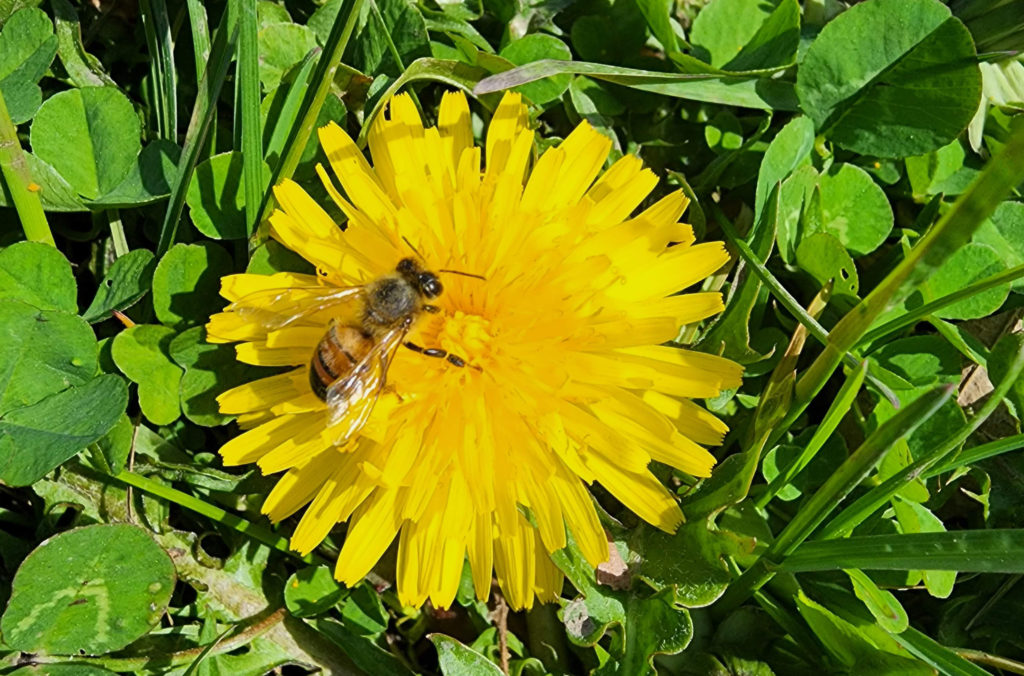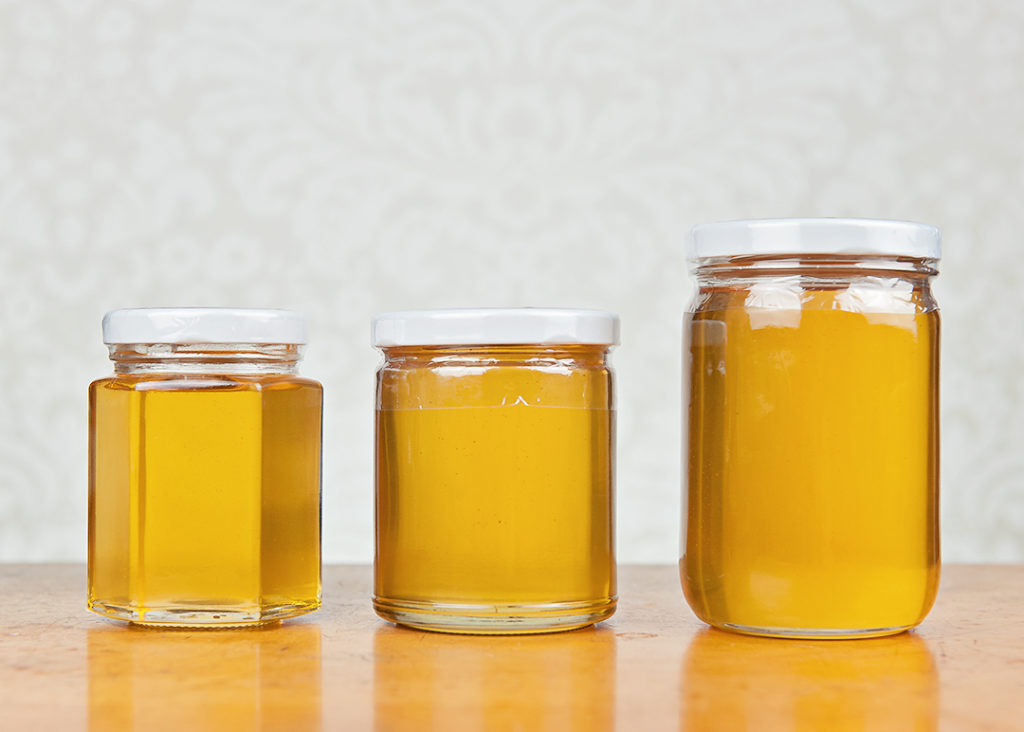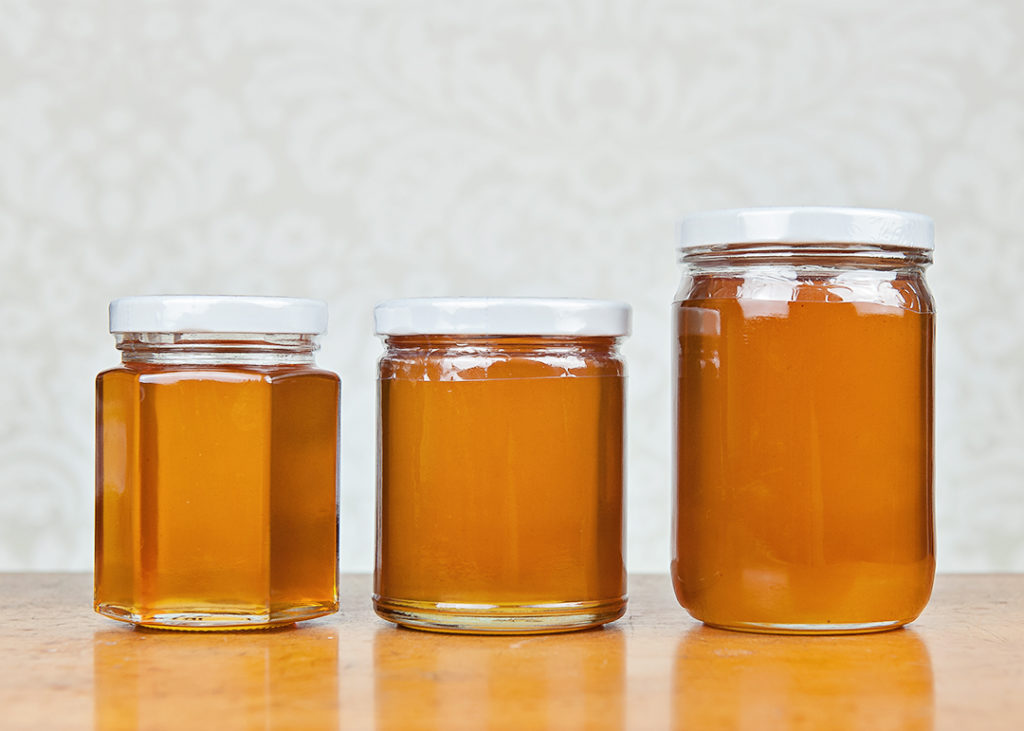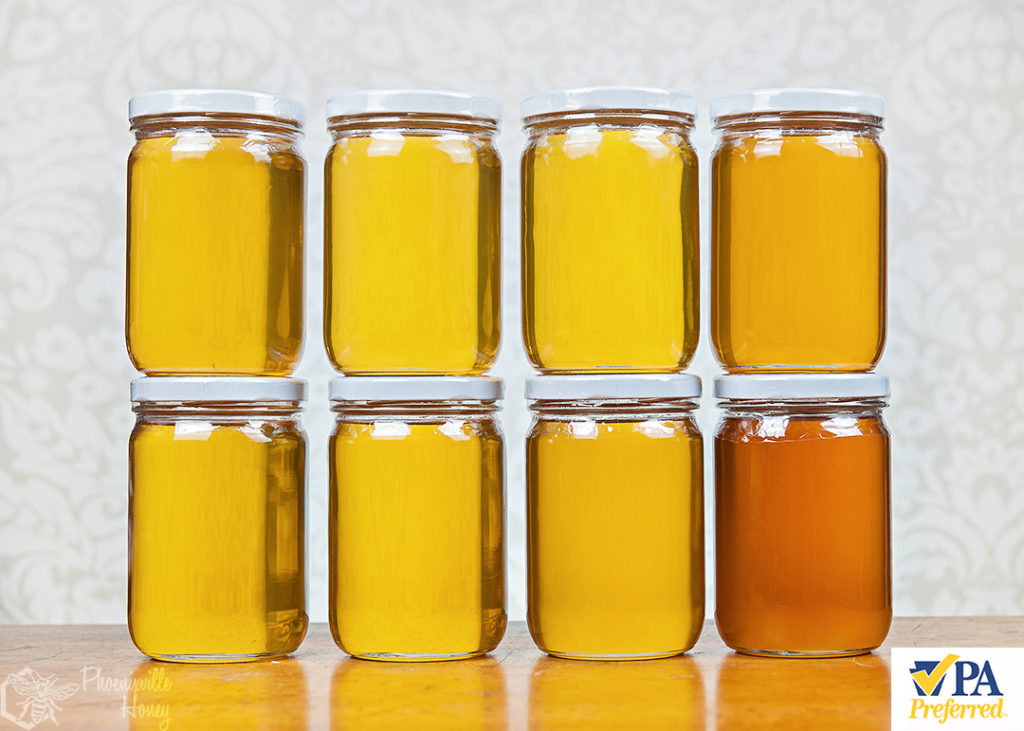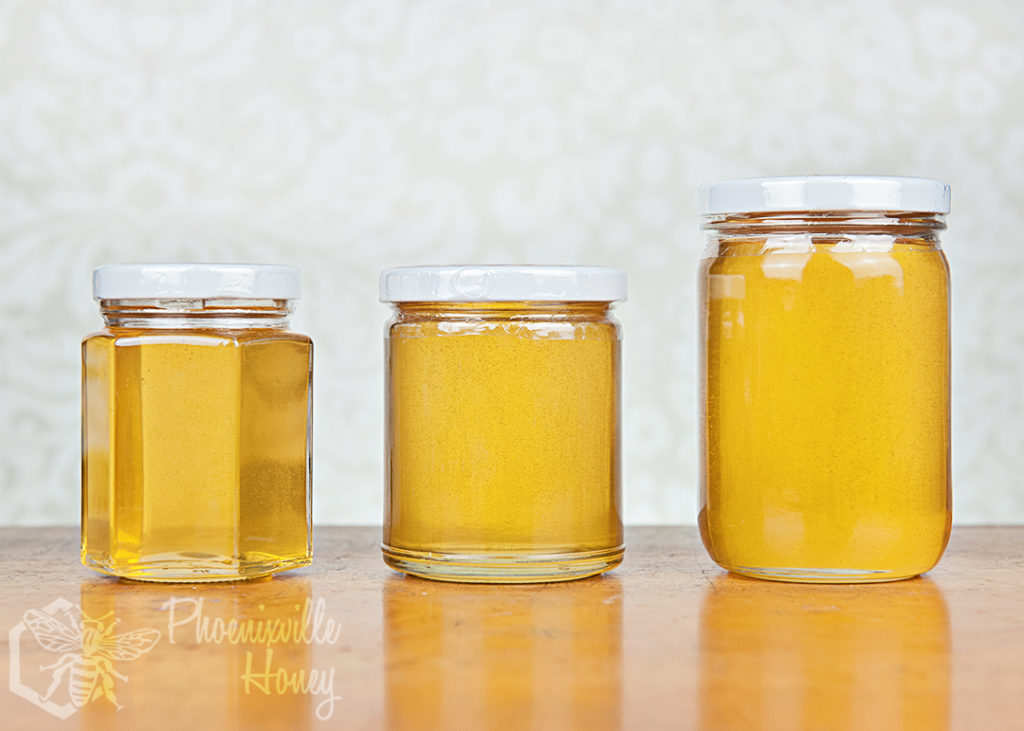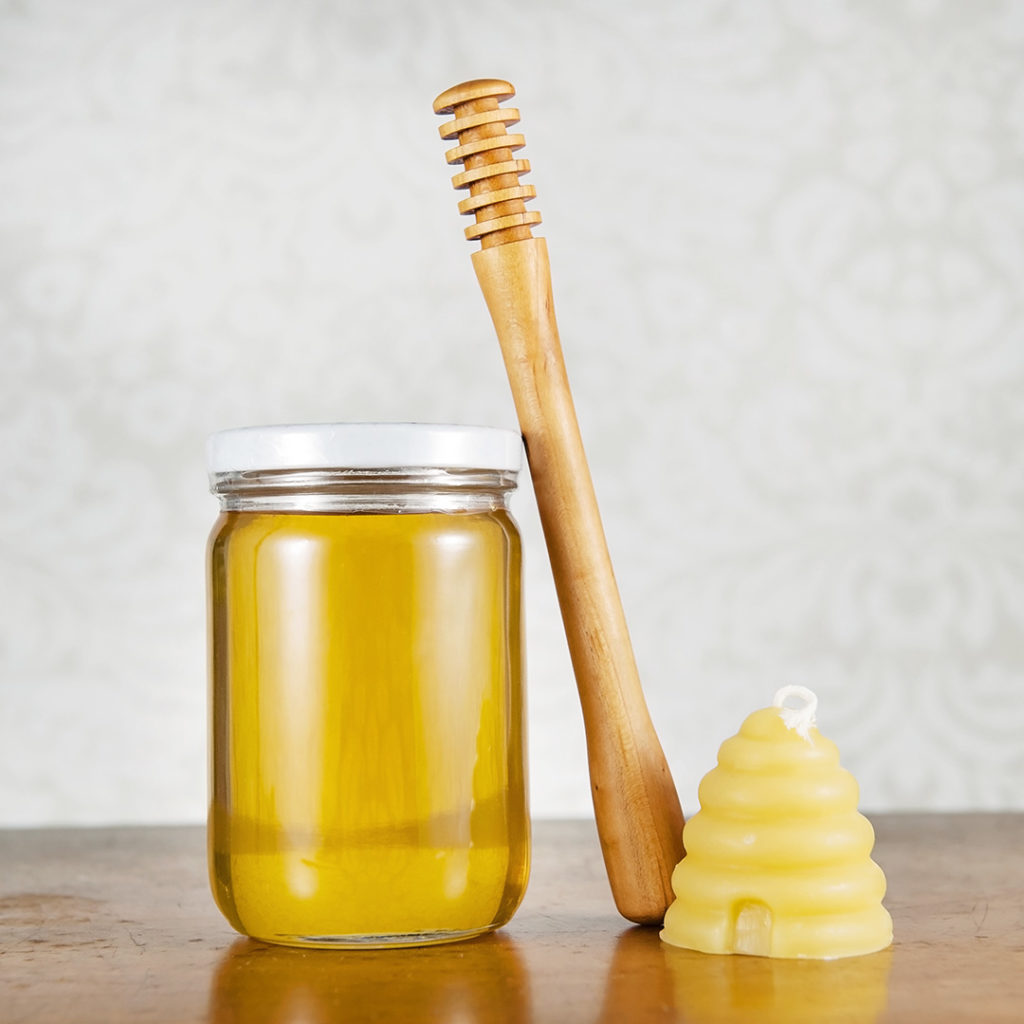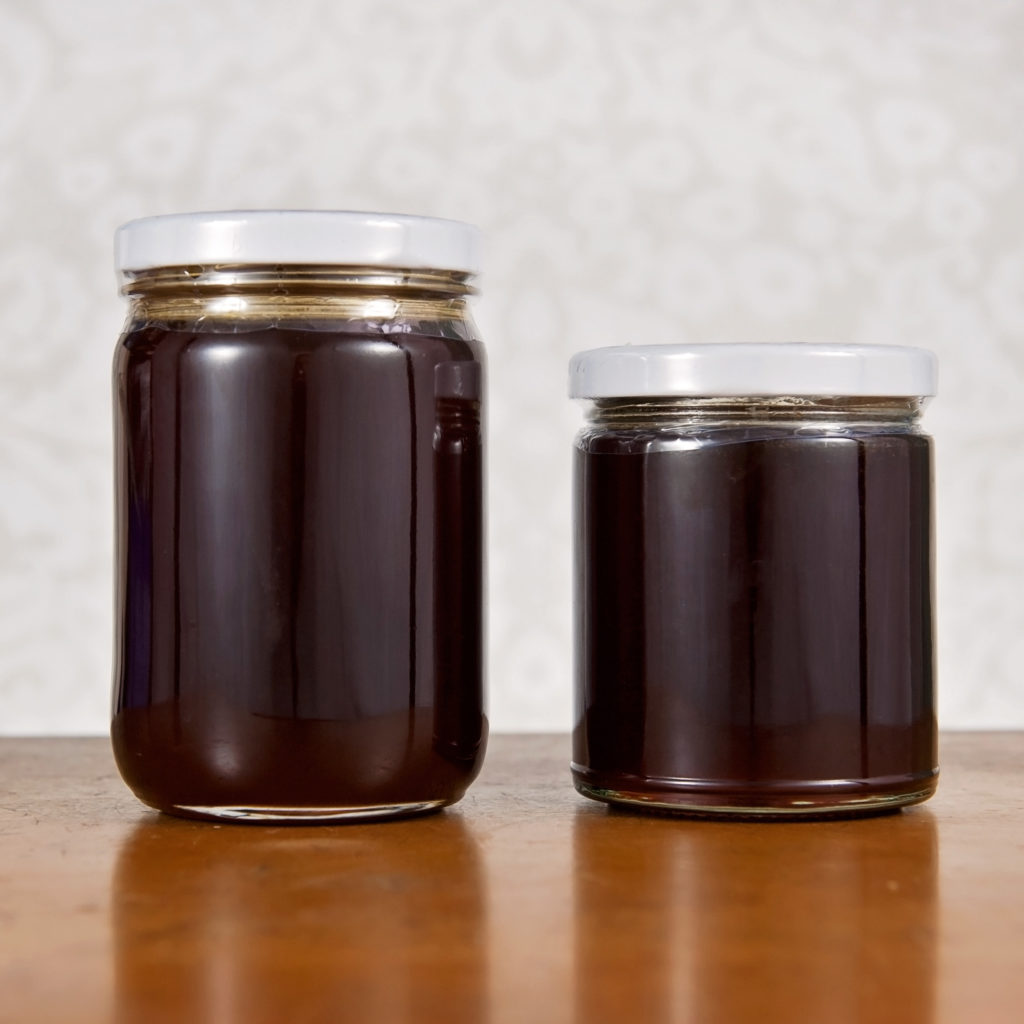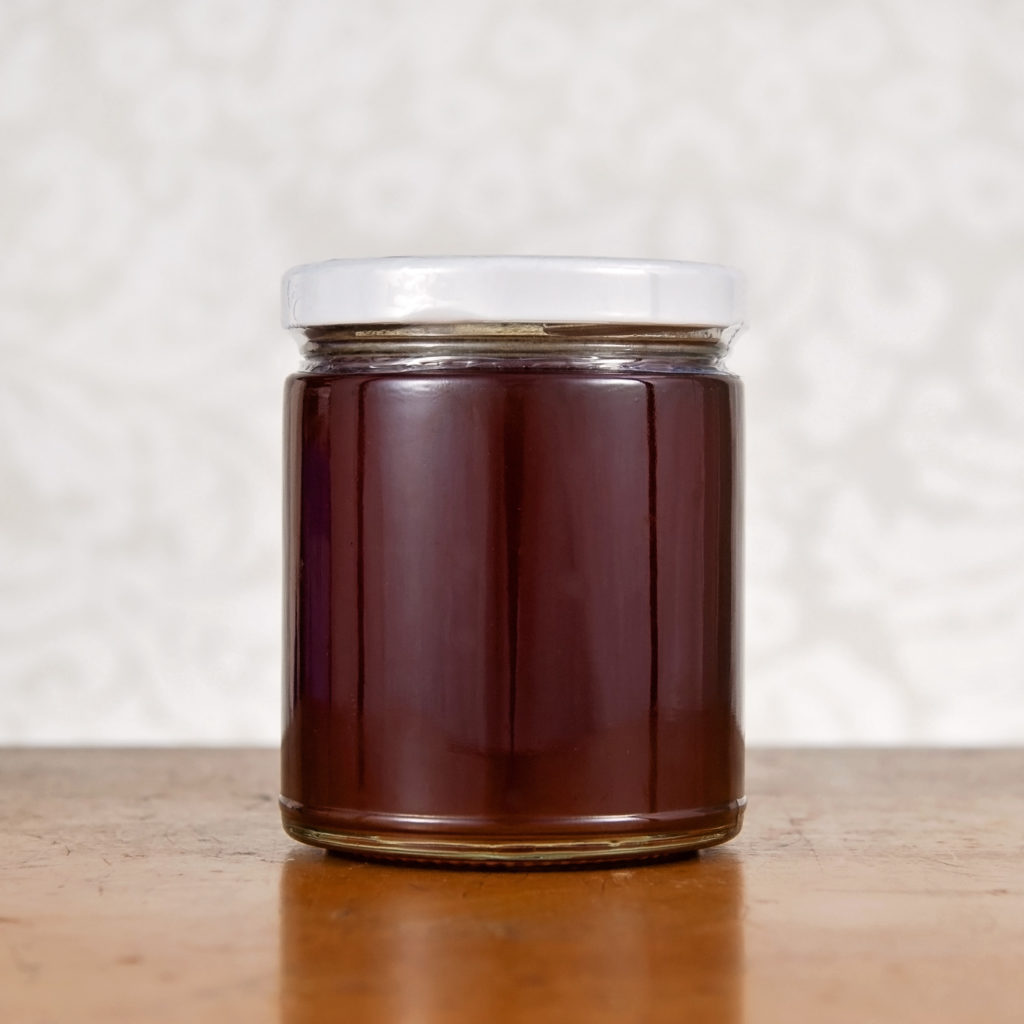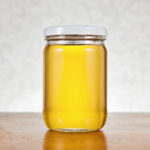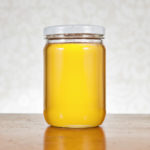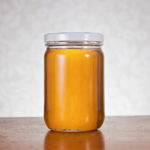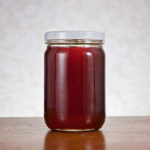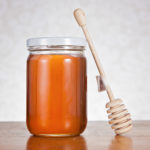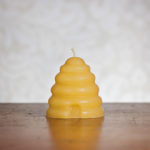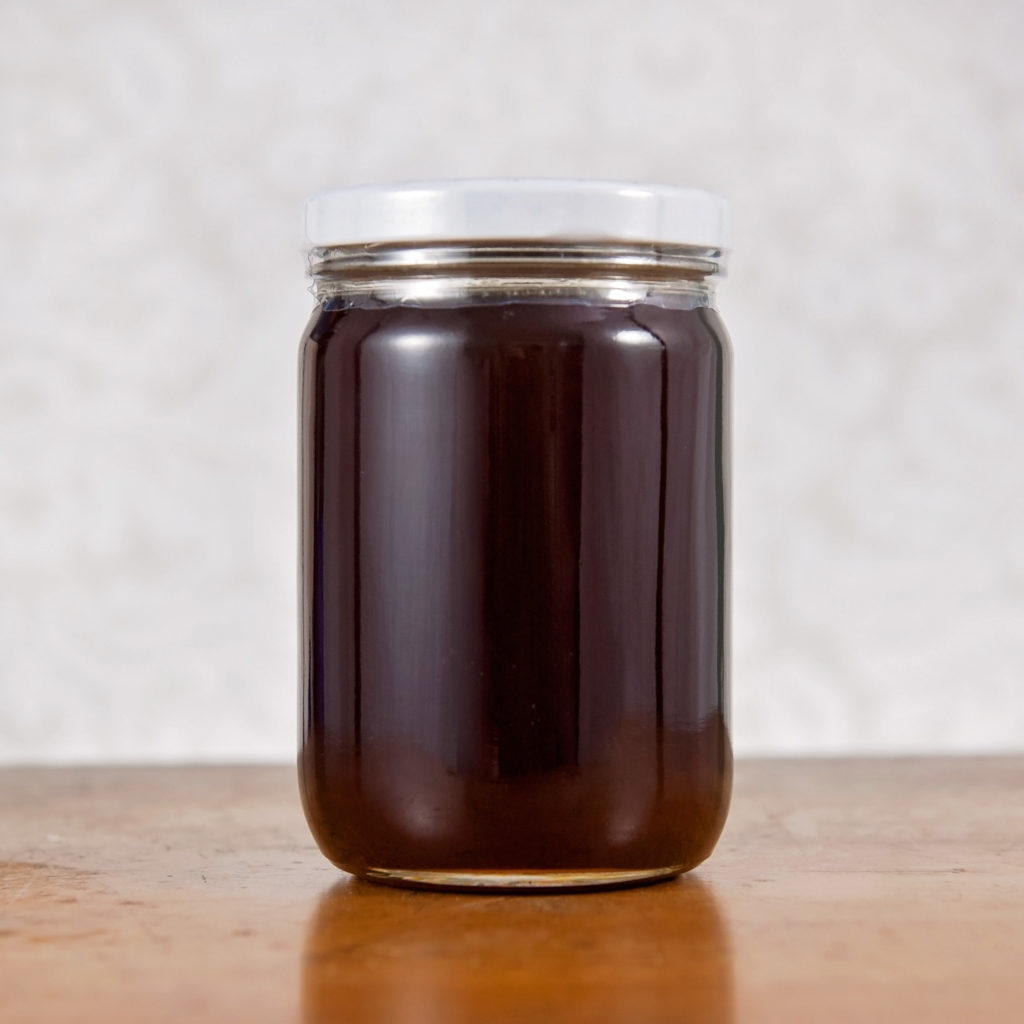
Due to a tremendous amount of rain this year, our honey season kicked back off for all of August after being fairly quiet in July. This usually means that our local farmers have planted buckwheat as a cover crop for their fields and that beautiful stuff is finally blooming. Buckwheat flowers produce boatloads of nectar, and you can imagine that a whole field of the stuff produces a tremendous amount of honey. This was definitely true this season! As a result, we now have the darkest honeys of the year coming in, including Batch I, seen above. Early spring honeys tend to be intensely sweet while darker honeys (influenced by buckwheat) have a rich flavor that’s almost like molasses. So what gives dark honey its color? Much like grapes and wine, the color in honey comes from the same types of compounds called polyphenols. Polyphenols also have antioxidant properties, so the darker the honey, typically the higher the antioxidant content. If you love bold red wines (Chianti or Merlot), dark chocolate, and espresso, you’ll love this honey!
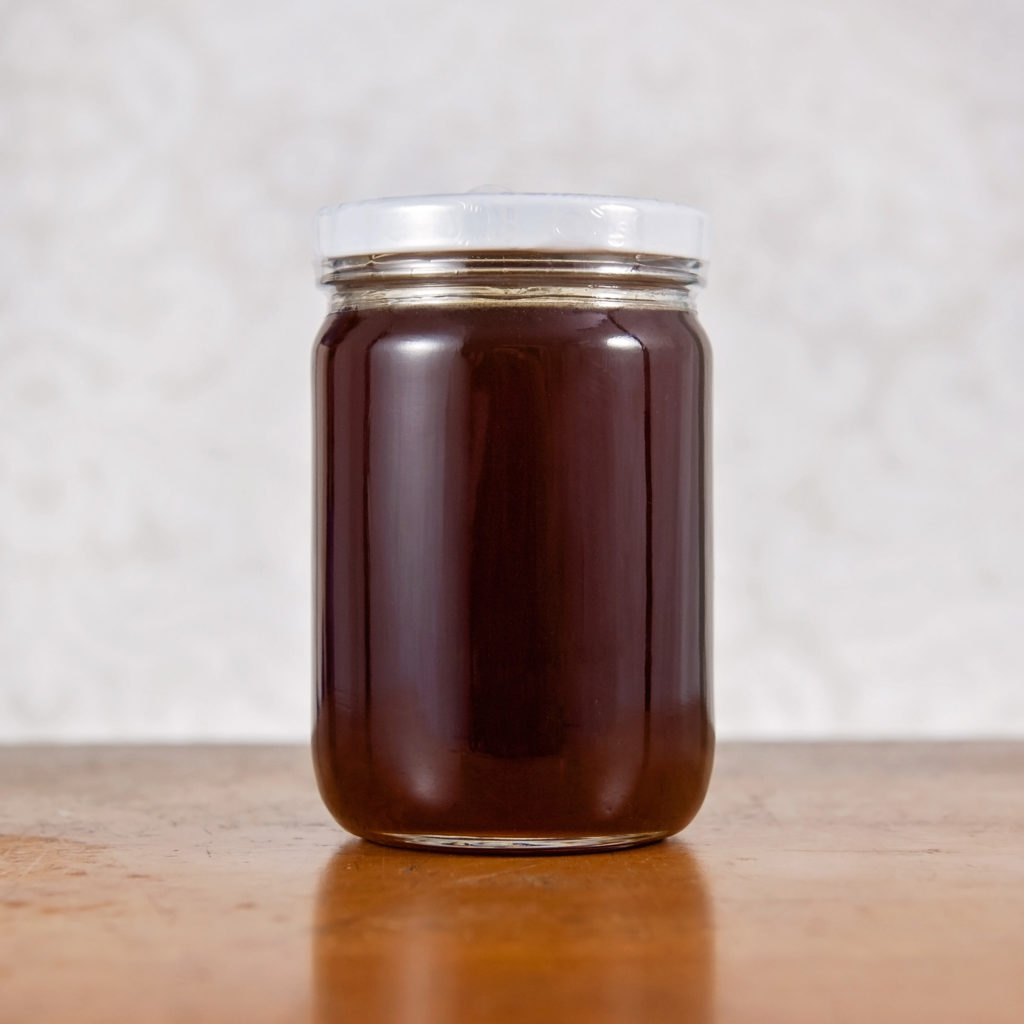
Also available now is a special collaboration with Camphill Soltane in Glenmoore, PA, batch Soltane 2020. We’ve been working all season alongside the staff to help get their hives set up and running. Beekeeping has a pretty steep learning curve, and the bees are always doing something new and confusing which makes it a constant learning process. Each hive can have its own unique quirks too, so they really keep you on your toes! The honey was collected from the hives on their campus and processed this year at our facility. Much like Batch I, this is a dark honey and their proximity to farms means it’s probably a good blend of buckwheat, Japanese knotweed, and clover. Just slightly lighter than I, but tastes rather similar. If you want to learn more about Camphill Soltane and how the hives will benefit their programs, check out their website: https://www.camphillsoltane.org/
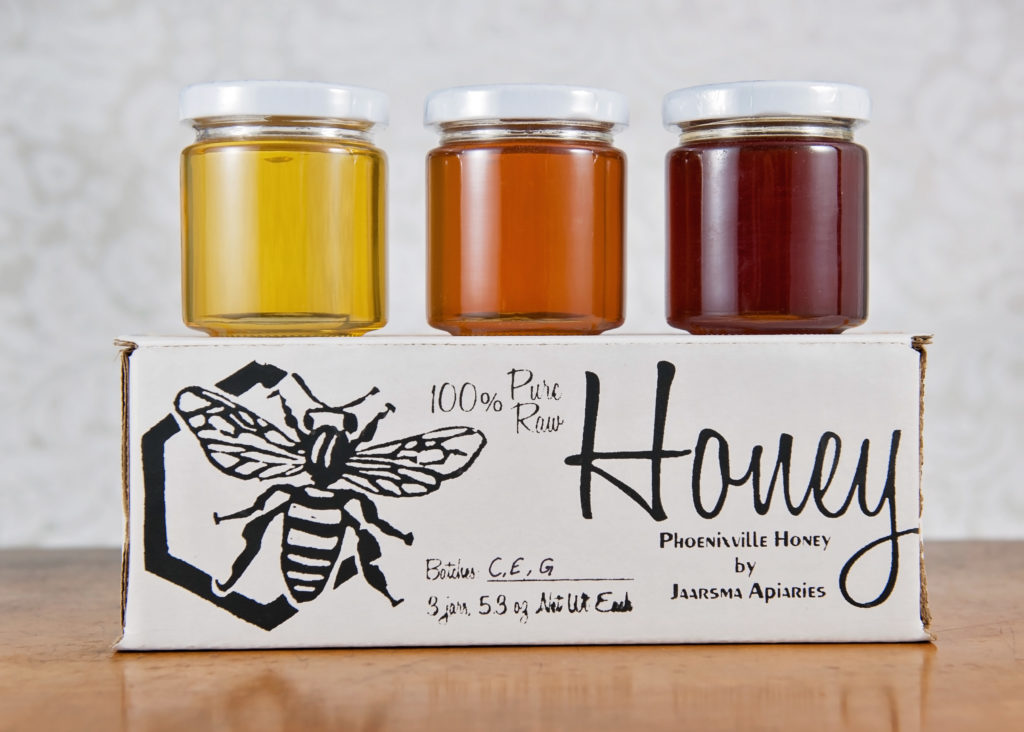
And finally, our last new addition is a culmination of a full year of beekeeping, our 2020 honey sampler! The sampler contains batches C, E, and G from 2020 each in 5.3 oz by weight jars, packaged in a hand-printed box. This is something we’ve been working on all year and we’re SO excited to finally see it come together. If you’ve ever wanted a small taste of each of the season’s honeys, this is a great way to try them all without committing to the full size, 1lb jar. Makes a great treat for yourself or a gift for a loved one. My idea for this is a great tasting board with the three honeys, different cheeses, meats, nuts, olives, cocktails or beer, and have a nice date-night-in sort of thing! Maybe pair it with a good movie or pick out a few records to enjoy while connecting with your favorite human.
As for the bees, the hives are now into Winter prep mode, treating for varroa mites, making sure they stock up on that stinky but wonderful goldenrod nectar and pollen and supplementing with sugar water if need be. All the hives seem to be doing well so far, the queens are laying eggs like mad to make sure they have enough “winter bees” (read: chunky, fatter bees to survive winter), and kicking out the male drones. The males are a strain on hive resources, so the workers start evictions around now and by late October, there won’t be a single male in the hive. The queen will start laying new drone eggs about in February or March (they result from an unfertilized egg), but until then, it’s just the ladies in the house! This can be a somewhat nerve wracking part of the year as the beekeeper tries to gauge how much resources they need, keep an eye on the mite load and check for a wide variety of viruses that can impact the hive. Winter survival can be such a tricky thing without all the other stresses that mites and viruses bring, and we always want to do our best to prepare them for winter. Just like the bees, we’re ready to help you prepare for the winter by stocking up on honey too! The web shop is open for local delivery (link in menu) and we’re working on getting some markets lined up for October and November.
